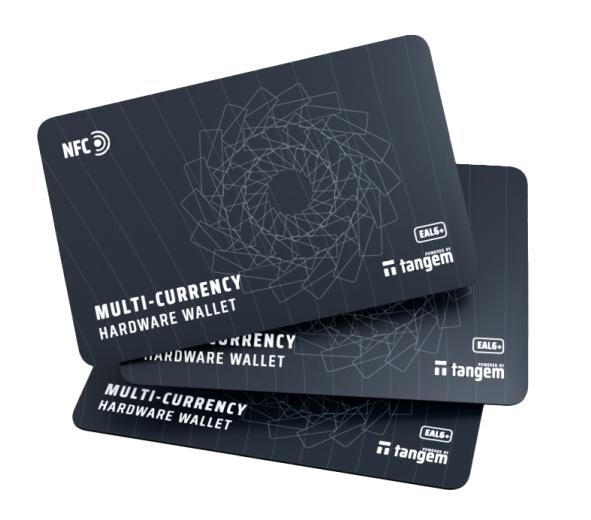Ever had that sinking feeling when you realize your crypto wallet backup is just a scribbled note or a clunky USB drive? Yeah, me too. It’s one of those moments where you think, “Wait, is this really secure?” Backup cards, especially those powered by NFC technology, are becoming a legit answer to this headache. Seriously, imagine carrying your crypto backup as easily as a credit card—no bulky hardware, no wires, just tap and go.
Here’s the thing. Traditional cold storage wallets are great, but they come with their quirks—fragile devices, complicated recovery phrases, and let’s not forget, the risk of physical damage or loss. I was skeptical at first. How secure can a card be when it’s so… accessible? But then I dug deeper, and wow, the layers of security embedded in these smart cards blew me away. It’s not just convenience; there’s real cryptographic muscle behind them.
At first glance, NFC backup cards seem like a neat gadget for the tech-savvy. But actually, they open doors for everyday users who want to safeguard their assets without wrestling with complicated seed phrases or trusting cloud backups. On one hand, you get this contactless ease that feels modern and slick. Though actually, the devil is in the details—how do these cards manage key storage without exposing vulnerabilities?
Well, the answer lies in hardware-based security modules integrated right into the card. This isn’t your typical RFID with a barcode slapped on it. These smart cards encrypt and store your private keys internally, meaning the keys never leave the card unprotected. My instinct said this was a game-changer. I mean, carrying a Tangem wallet card (yes, tangem is the brand I’m talking about) feels like having a fortress in your pocket—compact but seriously tough.
Really? Yeah, because unlike paper backups or plaintext digital files, these cards use a combination of NFC and secure elements that require you to physically tap the card to an authorized device to sign transactions or recover wallets. No Wi-Fi, no Bluetooth—just proximity-based security. I’m biased, but this method feels very US-friendly—simple, discreet, and low-tech in operation but high-tech in protection.

Why NFC? Because Contactless Is the Future
Okay, so check this out—NFC (Near Field Communication) technology has been around for a while, mainly in contactless payments and access cards. But applying it to crypto backups is pretty clever. It means the card can communicate instantly and securely with your phone or hardware wallet without wires or complicated setups. No plugs, no cables, just a quick tap.
That short-range interaction drastically reduces attack surfaces. Hackers can’t remotely steal your keys because the card only responds when it’s physically near the reader. Plus, since the keys never leave the card, even if your phone gets compromised, your crypto stays safe. At least, that’s the theory. I’m not 100% sure it’s foolproof—every tech has its flaws—but this definitely raises the bar.
One drawback that bugs me is the dependency on compatible devices. Not all phones or wallets support NFC, and sometimes the connection can be finicky. I remember trying to recover a wallet on an older phone and the card just wouldn’t connect. But new devices are catching up fast, especially here in the US where contactless payments are becoming the norm, so this problem is shrinking.
Plus, these smart cards fit neatly into your wallet, just like any bank card. That’s a huge plus for people who hate carrying extra gadgets. On the flip side, losing the card is a real risk—you gotta treat it like cash or your ID. But honestly, isn’t that just crypto 101?
Something felt off about the whole “backup card” label at first. It sounded like just another gimmick. But after playing around with one, I got how it’s more than a backup—it’s a full-fledged hardware wallet in a card form. You can sign transactions directly, verify addresses, and keep your keys offline. This is a big step up from just a paper seed phrase hidden under the mattress.
Personal Experience: Tangem and the Smart Card Revolution
I gave a tangem card a solid test run a few months ago. At first, I was just curious, but then it kinda hooked me. Setting it up was surprisingly smooth, especially if you’ve dealt with complicated wallets before. The card came with a simple app that let me create and manage wallets without fuss.
Whoa! The coolest part was how intuitive the NFC interaction felt. Just tap the card to my phone, approve a transaction, and boom—it’s done. No typing seed phrases or fumbling with cables. The physicality of the card made me feel more connected to my crypto. It’s weird to say, but having that tangible item reduces some of the anxiety around digital assets.
On the downside, I did notice the card can only store a limited number of wallets or keys, which might be a pain for power users juggling multiple assets. Also, while the card is very tamper-resistant, you still have to be careful with physical security. I kept mine in a separate wallet, not my everyday one, to avoid accidental loss.
Initially, I thought these cards would be more expensive than traditional hardware wallets. Actually, wait—let me rephrase that—it turns out the price is competitive, especially considering the convenience factor. For everyday users who want a no-fuss backup that’s easy to carry and use, this is a solid investment.
Another thing: the cards support contactless payments linked to your crypto wallet. This means you can actually spend your crypto in stores that accept NFC payments, which is pretty wild. It blends cold storage security with real-world usability. Though, honestly, I haven’t used this feature much yet because I’m still cautious about how widely accepted it is.
Here’s what bugs me about some of these solutions—the trade-off between security and convenience isn’t always clear. You want your backup card to be easy to use, but not so easy that anyone who finds it can drain your funds. The magic lies in the balance, and I think smart cards using NFC are nudging us closer.
Oh, and by the way, if you’re wondering about recoverability: these cards often come with a way to back up your keys securely elsewhere, or generate a recovery phrase that you can keep offline. So losing the card doesn’t necessarily mean losing your crypto, but you better have that backup somewhere safe.
Future Outlook: Will Smart Cards Replace Traditional Wallets?
Hmm… I’m torn. On one hand, the convenience and security NFC backup cards offer make them a compelling alternative to bulky hardware wallets and fragile paper backups. On the other hand, these cards are still relatively new tech and haven’t been battle-tested over years like Ledger or Trezor devices.
Regulation and usability will play a huge role. If more crypto platforms and exchanges start supporting contactless payments and smart card integrations, adoption could skyrocket. The US market, especially, loves anything that simplifies payments and security—so this could catch on fast.
Still, I’m watching closely to see how these cards handle firmware updates, potential vulnerabilities, and long-term durability. Crypto users are notoriously cautious (and rightly so). Losing trust in a backup method can be devastating.
Personally, I wouldn’t put all my eggs in one basket. Combining a tangem smart card with traditional hardware wallets and secure offline backups feels like the smartest move. That layered security approach is my comfort zone.
So, if you’re the kind of person who wants a sleek, contactless backup that fits in your wallet and lets you tap your way through transactions, NFC smart cards like tangem are worth a serious look. Just remember, no solution is perfect. Stay vigilant, keep backups multiple, and don’t get lazy.
In the end, the backup card revolution isn’t just about tech; it’s about how we rethink owning and controlling crypto in everyday life. It’s a small card but carries big potential—kind of like that little extra change jingling in your pocket that can make your day better.


